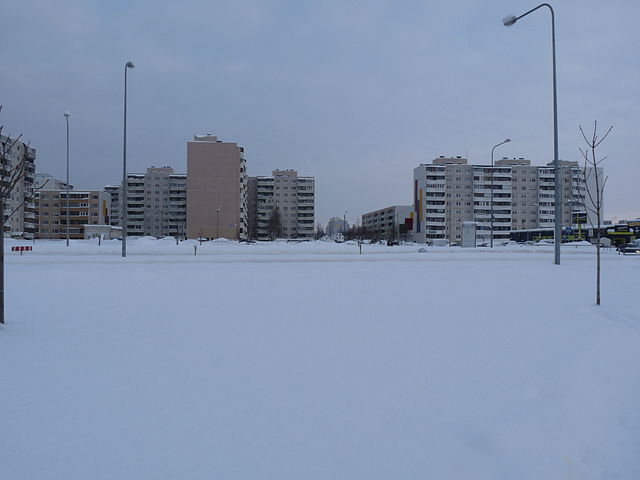
The Second World War saw the large-scale strategic bombing of most urban centers in Central and Eastern Europe. As Soviet armies “liberated” Poland and advanced into East Germany, authorities in the USSR realized that it would be a gargantuan undertaking to rebuild their newly occupied territories. Thus, they resorted to the cheapest and most efficient solutions possible. For residential housing, this took the form of the Commieblock. So named because of their association with the Soviet Union and its satellite states, the Commieblocks were gargantuan constructions of concrete and cheap steel, sterile in nature and entirely dismal to look at or live in. Decades later, American administrators seem to be learning from their Socialist predecessors. While Dartmouth has yet to suffer large-scale aerial attack, we are in the midst of a fifty-year-long housing crisis that has stretched campus residential facilities to the breaking point. So, taking a leaf out of Khruschev’s book, the College has responded with Summit at Juniper, a series of “efficiently” produced boxes stacked together, entirely lacking in both quality and character.
Summit at Juniper is a recently-built housing complex located near DHMC and consisting of dozens of apartments for upperclassmen. On the surface, it appears to at least be of reasonable quality. The apartments are sizable enough, have cooking facilities and bathrooms, and are not actively decaying. As an aside, the fact that the absence of lead paint and the presence of a stove make a dorm exceptionally good at Dartmouth shows just how abysmal the state of housing is at Dartmouth. Yet, Summit suffers from the same issues that plague the other hurriedly-constructed new residential buildings. From faulty pipes to broken appliances, the Summit is little more than a hovel covered in gold leaf. Further, it lacks any of the character of older Dartmouth housing. While the Fayes may be decrepit and actively falling apart, it at least has history. When your radiator stops functioning in December, you at least know that centuries of Dartmouth students have dealt with the exact same radiator, submitted the exact same repair requests, and received the exact same half-assed repairs three weeks later. Struggle is truly the bridge that connects generations. Summit at Juniper lacks that wholesome (morbid) connection. What’s more, it simply does not “look Dartmouth.” Its modernist, minimalistic aesthetic clashes with both the Dartmouth image and the human soul. Human beings were not meant to live in solid-color cubist buildings with interiors that look like the crew cabins from a Star Trek knockoff.
Perhaps the most obvious problem with the Summit at Juniper is that it is ridiculously far away. It takes the bus about twenty minutes to reach Summit, cutting residents off from campus both physically and emotionally. It creates its own community, isolated from Dartmouth just as Dartmouth is isolated from the world by virtue of New Hampshire. Even worse, the bus stops running at 2am. While this may seem late for some, true Dartmouth students know that the party only starts then. Living at the Summit essentially prevents one from being ragey. We often complain about how no one rages anymore. Well, at least the people in Summit have an excuse: if they stay out past the witching hour, they’ll have to sleep on a couch in a frat basement. Summit at Juniper is only furthering our worst ongoing crisis: the decline of rage culture at Dartmouth.
Despite the problems with Summit, it is still full. Is this because some people at Dartmouth do not share my sheer revulsion at modernist architecture? Perhaps. Yet, the larger reason is that there simply are no other options. Summit at Juniper is a stopgap, quickly constructed to catch the overflow from Dartmouth’s overcrowded on-campus housing. Some argue that Summit is a good thing. While imperfect, it does somewhat reduce the housing shortage. This writer, however, expects more from Dartmouth than the absolute minimum. A college with billions of dollars should be able to do more than construct poor buildings to just barely stay ahead of its student population. We should, at the very least, have housing that compares to that at state schools with less money and more students. That we do not is a testimony to the failure of Dartmouth’s leadership.

Be the first to comment on "Summit At Juniper Housing: The Return of the Commieblock"